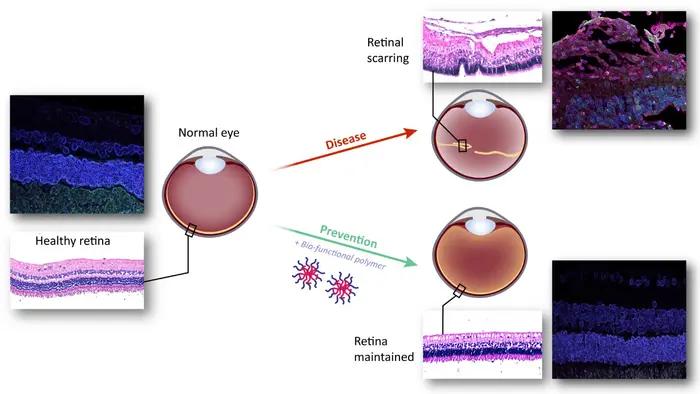Preventing retinal scarring with novel thermogel therapy
A team of investigators at the Agency for Science, Technology and Research in Singapore have developed a bio-functional thermogel, a type of synthetic polymer, to prevent retinal scarring caused by failed retinal detachment repair surgery.

A team of Singapore scientists have developed a bio-functional thermogel, a type of synthetic polymer, to prevent retinal scarring caused by failed retinal detachment repair surgery.
According to a news release from the Agency for Science, Technology and Research (A*STAR) in Singapore, proliferative vitreoretinopathy (PVR) occurs when the retinal scarring prevents the retina from healing and falling back into place, and accounts for more than 75 per cent of failed retinal detachment surgeries, and may result in vision loss or blindness if left unrepaired.
Current treatment options for PVR are limited to surgical removal of these scar membranes with guarded visual recovery.1 This work highlights the potential of using synthetic polymers alone to modulate cellular behavior and for the first time, offers a novel thermogel-based therapy to prevent retinal scarring.
The news release noted that the investigators behind the development hails from A*STAR’s Institute of Molecular and Cell Biology (IMCB) and Institute of Materials Research and Engineering (IMRE), the National University of Singapore (NUS) and the Singapore Eye Research Institute (SERI).
The research team demonstrated that a bio-functional thermogel alone is able to prevent retinal scarring in a pre-clinical model that mimics human disease. Using retinal cells, the team observed that the thermogel prevented the development of the scar membranes by modulating cellular behaviours such as proliferation and migration. Using genome-wide transcriptomic analysis to profile cellular gene expression, they revealed that the thermogel activated a protein called nuclear factor erythroid 2-related factor 2 (NRF2), to kickstart a series of chemical reactions to prevent scarring.
“Our study offers insight into how synthetic polymers no longer function merely as inert drug carriers. It challenges the conventional belief that the use of a small molecule drug is always required to achieve a therapeutic effect. Beyond ophthalmology, this unique bio-functionality of the thermogel can also be applied to other diseases such as orthopedics where intra-articular joint scarring might be a problem,” said Su Xinyi, MD, PhD, senior principal Investigator and division director at A*STAR’s IMCB, and Assistant Professor in the Department of Ophthalmology at NUS Yong Loo Lin School of Medicine.
A healthy retina contains organized light-sensitive layers of neurons at the back of the eye. Upon retinal scarring, it can result in retinal detachment with loss of these organized layers and visual impairment. Application of a bio-functional thermogel prevents this detachment and maintains the retina. (Image courtesy of Kim Chi Tran, A*STAR’s Institute of Molecular and Cell Biology)

“When we first developed this bio-functional thermogel at IMRE, we realized it was a significant step forward in developing next-generation biodegradable polymers. Its ability to mimic and substitute vitreous given the biocompatibility of the material, makes it useful for many other biomedical applications,” said Loh Xian Jun, PhD, executive director at A*STAR’s IMRE.
According to the news release, the thermogel is currently being commercialized by Vitreogel Innovations Inc, an A*STAR spin-off that focuses on developing polymer-based therapeutics for ophthalmology indications.
Building on this work, A*STAR noted in the news release that the team will continue to test the safety and efficacy of this polymer for retinal detachment repair and PVR prevention using additional pre-clinical disease models. Through their work, the team aims to engineer the next generation of polymers with targeted chemical modifications to elicit specific cellular behaviors, and identify alternative applications of the thermogel beyond ophthalmology.